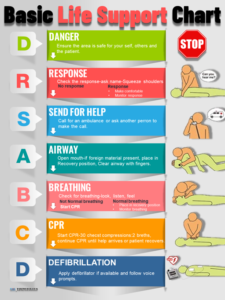Layer Flame-Resistant Clothing
4 min readHow to Layer Flame-Resistant Clothing (And When You Should Do It)
Selecting and using flame-resistant (FR) clothing can be fairly simple. But when you add layering to the mix, it gets a lot more complex.
That’s why we’ve created this mini-guide, which will help you understand why it’s beneficial to layer FR clothing, how to determine the overall arc rating of the layers, and what you should consider before you start layering.

WHY USE LAYERS?
There are a few reasons why workers might prefer layering their FR clothing rather than wearing one heavy piece that meets the required arc rating.
It’s More Comfortable
For jobs that require a high degree of protection, flash suits and heavy outwear usually do the job. But workers often find that these restrict their movement and are far too hot to wear in warm work environments.
Layering fixes this problem by allowing workers to wear several lighter, more breathable garments that wick away moisture, control odors, and allow for greater mobility.
t’s Good for Workers Doing Varied Tasks
About 67 percent of all tasks at typical industrial companies are ranked at HRC 2 or below. This means workers are sufficiently protected by their primary layer of FR apparel. Layering makes it easy for workers to don a coverall that boosts the protection to HRC 3 when moving to a higher exposure task, then remove it again when returning to their regular duties.
Layering Tends to Increase the Arc Rating
When tested together, layered FR garments often have a higher arc rating than the sum of the individual pieces.
If that sounds like we’re saying 2 + 2 = 5, it’s because there’s more than just the clothing itself at work. Layering FR garments creates a layer of air between each item, which tends to boost the overall protection.
DETERMINING THE ARC RATING OF LAYERED CLOTHING
Unfortunately, calculating the total arc rating of your layers isn’t as simple as adding the arc rating of each garment together. For example, if you have a light FR jacket with a rating of 8cal/cm2 and an FR shirt underneath with a rating of 4cal/cm2, the total arc rating isn’t necessarily 12 cal/cm2.
To determine an accurate arc rating, the layered garments must be tested together in the order that they are worn. As mentioned above, in many instances the layered clothing will have a higher arc rating than simply adding the sums together.
YOUR GUIDE TO LAYERING FLAME-RESISTANT CLOTHING
If the job requires an arc rating of more than 4 cal/cm2 (hazard risk category 1), you should consider using layers to achieve the required protection.
Here’s what you need to know to layer your FR clothing for maximum safety.
1. Make Sure the Base Layer Is Non-Melting
If your base layer (the one closest to your skin) is arc rated and made of non-melting fabric (and it should be), then it will contribute to the total arc rating of your layered FR clothing.
This layer can also help you keep cool, so opt for a close-fitting garment that wicks away moisture and controls odor.
2. Consider the Material
There is a wide variety of FR material available now, so workers have some choice when it comes to the fabric their garments are made of. Review the following factors when selecting your flame resistant PPE:
- Level of protection
- Whether the flame resistance is inherent or chemically applied
- Cost
- Durability
- Comfort and mobility
- Care requirements
- Availability
3. Review Tasks to Determine Layering Needs
In many instances, workers who require PPE with a high arc rating don’t need it all day. In fact, sometimes it’s just necessary for one task. Planning ahead allows you to determine what level of protection workers need and when they need it.
Once you have an idea of this, you can decide what type of layers work best so that workers remain sufficiently protected when they shed layers that are no longer needed. Generally, you want to aim for enough protection that it meets standards, but not so much that it creates discomfort.
4. Always Choose a Flame-Resistant Outer Layer
No matter how many FR layers you have underneath, the outermost layer must always be flame resistant. The outer layer is the first one to be exposed to arc flashes, and flammable fabric will ignite easily and continue to burn, negating the FR effects of the layers underneath.
5. Don’t Forget About Visibility Requirements
Some workers require their protective gear to be both flame resistant and hi-vis. As per the 2015 revision to ANSI/ISEA 107-2015 standard for High-Visibility Safety Apparel and Accessories, apparel that’s labeled as flame resistant must meet one of these recognized standards:
- ASTM F1506 or ASTM F1891 for electric arc protection
- ASTM F2733 for flash fire protection
- NFPA 2112
- NFPA 1977
A FEW FINAL WORDS
It’s not difficult to find a garment that will meet your worker’s required level of protection. But things get tricky when it comes to layering.
Safety professionals need to brush up on the standards and verify that layered garments provide the right amount of protection. It’s also important to educate workers, so they know when they know when they can safely remove certain layers and when they need to put them back on.
Though this requires extra effort on the part of safety professionals and supervisors, the increased comfort that comes from layering means an increased likelihood that workers will comply with their protective clothing requirements.





